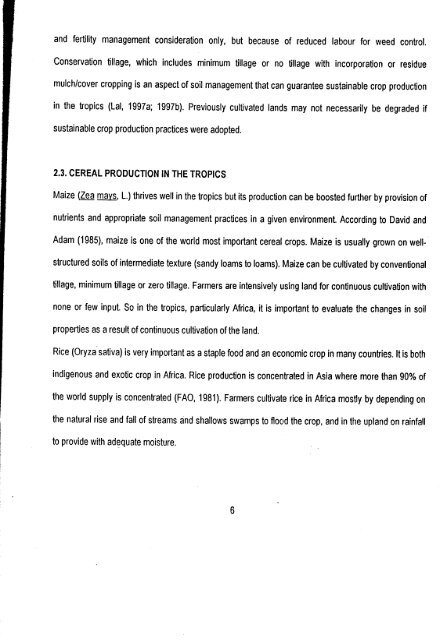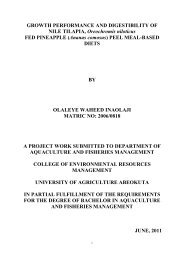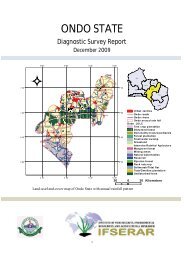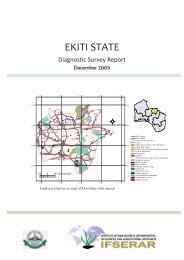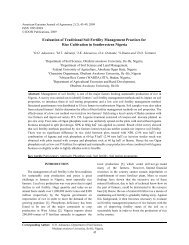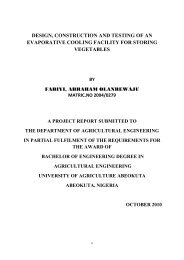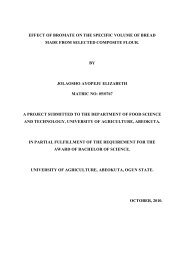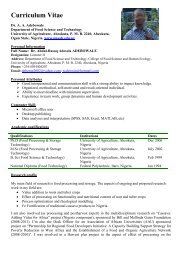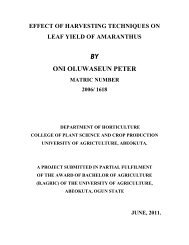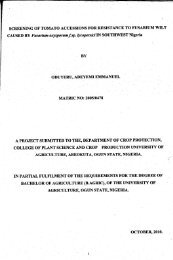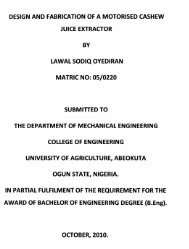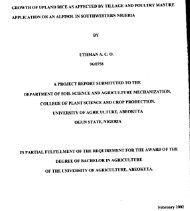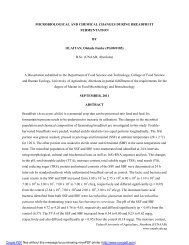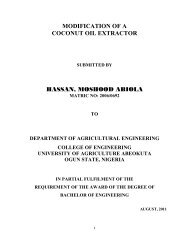akinsanya, olawale - The Federal University of Agriculture, Abeokuta
akinsanya, olawale - The Federal University of Agriculture, Abeokuta
akinsanya, olawale - The Federal University of Agriculture, Abeokuta
You also want an ePaper? Increase the reach of your titles
YUMPU automatically turns print PDFs into web optimized ePapers that Google loves.
and fertility management consideration only, but because <strong>of</strong> reduced labour for weed control.<br />
Conservation @age, which includes minimum tillage or no tillage with incorporation or residue<br />
mulch/cover cropping is an aspect <strong>of</strong> soil management that can guarantee sustainable crop production<br />
in the tropics (Lal, 1997a; 1997b). Previously cultivated lands may not necessarily be degraded if<br />
sustainable crop production practices were adopted.<br />
2.3. CEREAL PRODUCTION IN THE TROPICS<br />
Maize (Zea mays, L.) thrives well in the tropics but its production can be boosted further by provision <strong>of</strong><br />
nutrients and appropriate soil management practices in a given environment. According to David and<br />
Adam (1985), maize is one <strong>of</strong> the world most important cereal crops. Maize is usually grown on wellstructured<br />
soils <strong>of</strong> intermediate texture (sandy loams to loams). Maize can be cultivated by conventional<br />
tillage, minimum tillage or zero tillage. Farmers are intensively using land for continuous cultivation with<br />
none or few input. So in the tropics, particularly Africa, it is important to evaluate the changes in soil<br />
properties as a result <strong>of</strong> continuous cultivation <strong>of</strong> the land.<br />
Rice (Oryza'sativa) is very important as a staple food and an economic crop in many countries. It is both<br />
indigenous and exotic crop in Africa. Rice production is concentrated in Asia where more than 90% <strong>of</strong><br />
the world supply is concentrated (FAO, 1981). Farmers cultivate rice in Africa mostly by depending on<br />
the natural rise and fall <strong>of</strong> streams and shallows swamps to flood the crop, and in the upland on rainfall<br />
to provide with ad~quate moisture.


